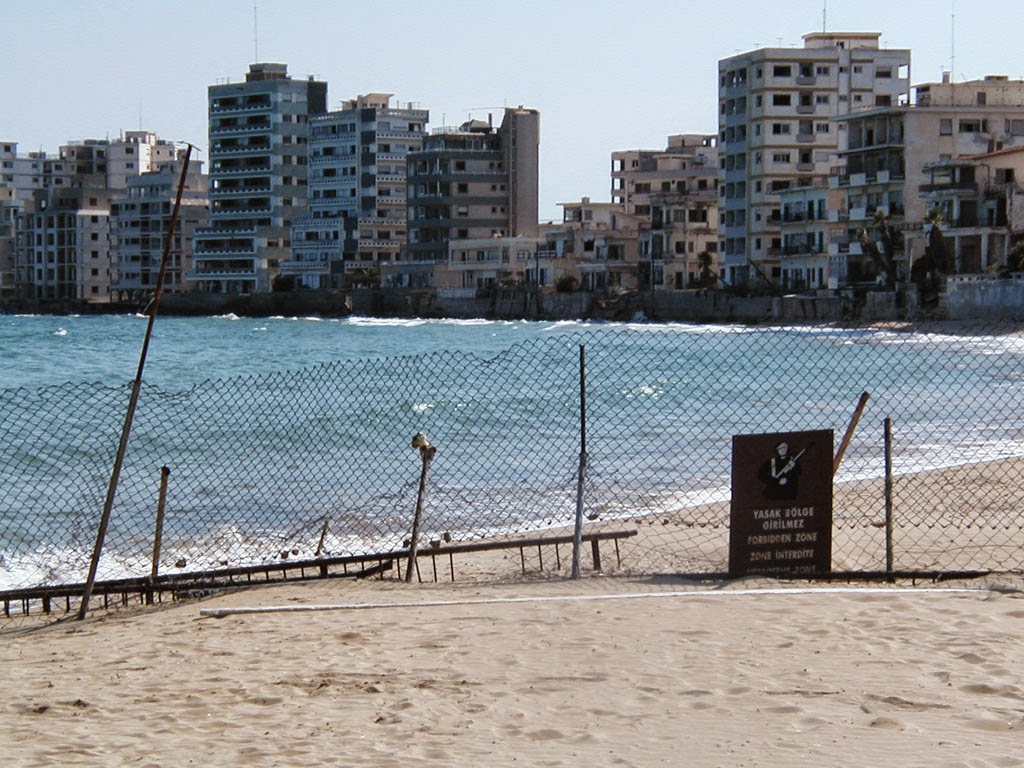Beautiful sandy beaches adjoin dilapidated high rise hotels making Varosha one of the more intriguing ghost towns. To understand why it was abandoned we have to start with a quick history lesson.
Varosha is a section of the city of Famagusta on the east coast of Northern Cyprus. Cyprus is a Mediterranean island whose population consists of two ethnic communities: Greek and Turkish. The island was under the control of the Ottoman empire from 1571 to 1878 and then under British control from 1878 to 1960. During British rule there was a growing nationalist movement by the majority Greek Cypriots for union with Greece (enosis). The British opposed the enosis movement which lead to numerous protest, riots and acts of violence. In the late 1950's, Turkish Cypriots responded to the enosis demand by calling for partition (taksim) of the island. In an attempt to deal with increased violence between the two ethnic groups, the London and Zurich Agreements resulted in Cyprus gaining its independence from Britain in 1960. Almost immediately the new government began to fall apart as cooperation between the two sides could not be achieved.
In 1974 there was a coup d'état of the government by the Cypriot National Guard assisted by the military junta which at that time ruled Greece. Then President Makarios III was replaced with a pro-Enosis nationalist dictator named Nikos Sampson. In response to the coup, Turkey invaded the island, taking control of the north. Just hours before the Turkish and Greek Cypriot armies met in Varosha, the entire population fled. Once Turkish forces gained control of the area, it was fenced off and became part of of the Green Line, which is the present day border between the two communities.
To this day the area remains barricaded and patrolled by the Turkish military. Though most items of value were stolen long ago by Turkish soldiers and other marauders, the majority of the areas buildings still exist in various states of decay.
Here are images of Varosha before the 1974 invasion.
Update: This 2018 video shows that the empty city is vastly larger than the beach front property typically shown.










